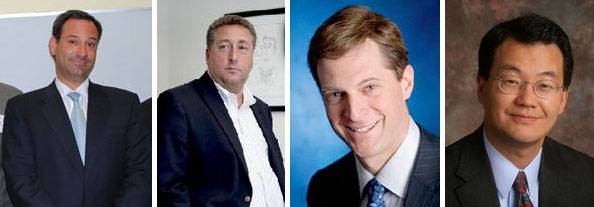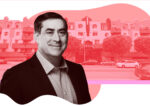Trending
Who got it right and wrong in predicting the 2010 market

From left: Andrew Peretz, Barry Ritholtz, Eric Anton and Lawrence Yun
Many make a profession of foreseeing the future: meteorologists and fortune-tellers, among others. But there are few harder industries to predict than real estate, even for market experts. And after 2009’s battering, few ventured a guess on 2010’s outcome. As The Real Deal‘s Editor-in-Chief Stuart Elliott noted in January 2010, “if we were to turn a corner, we wouldn’t know it until we did.” But, as we did last year, The Real Deal has looked at the most noteworthy predictions of the year to determine just how right — or wrong — those forecasts were.
Prediction: The Downtown office market could ultimately reach a 15.75 percent vacancy rate in 2010
Soothsayer: Andrew Peretz, executive director at Cushman & Wakefield
Verdict: Not too far off
Peretz was quite bearish on Downtown in January 2010, when he discussed the neighborhood’s office market during his company’s fourth-quarter market briefing. The Cushman executive warned that the vacancy rate there could climb significantly through 2010, as financial firms shed unneeded office space to save money. While the fourth-quarter data isn’t yet out, the overall vacancy rate hit 12.1 percent Downtown in the third quarter, according to a Cushman market report. This vacancy is the highest seen in that neighborhood since 2006, according to Cushman.
Prediction: The New York City residential market could fall dramatically, again
Soothsayer: Economist Barry Ritholtz… and plenty of others
Verdict: So-so
In November 2009, Ritholtz told The Real Deal that “the worst of the bloodbath is probably behind us in terms of falling prices.” But, he contended then that “New York [had not reached] a bottom quite yet.” Recent sentiment among industry insiders differs from this somewhat. And in the broader market, median residential prices in Manhattan were up 7.6 percent year-over-year by the second quarter of the year. But one of Ritholtz’s concerns — unemployment — was dead-on. As of September, New York City was still down 131,000 net jobs. He predicted that unemployment would remain a thorn in the local economy’s side.
Prediction: Pop-up shops will be a thing of the past
Soothsayer: Women’s Wear Daily
Verdict: Dead wrong
In December 2009, a collection of experts at Women’s Wear Daily declared that the pop-up shop trend’s days were numbered. This year, however, could have easily been declared the year of the pop-up. By April of this year, retail guru Faith Hope Consolo of Prudential Douglas Elliman had decided that pop-ups were “here to stay,” while Eastern Consolidated veteran Eric Anton had co-founded a pop-up-focused real estate website, aimed at connecting landlords and temporary tenants. The website, PopUpInsider.com, was still gaining traction by December as old-faithful brand names like FAO Schwarz, Borders and retailer Under Armour were getting in on the fad.
Prediction: Mortgage interest rates to hit near 6 percent nationwide by the end of 2010
Soothsayer: Lawrence Yun, chief economist with the National Association of Realtors
Verdict: Not even close
In late December 2009, Yun went on CNBC to share his prediction that mortgage rates would rise significantly throughout 2010, eventually reaching upwards of 5.7 percent toward the end of year. “No one should have expected mortgage rates to remain under 5 percent,” Yun said of end-of-year rates in 2009, “so the only way is to move up.” But while Yun wasn’t alone in his prediction — Freddie Mac backed him up — he was dead wrong. Thirty-year fixed mortgage rates were still at 4.85 percent during the week that ended Dec. 17, according to the Mortgage Bankers Association.




